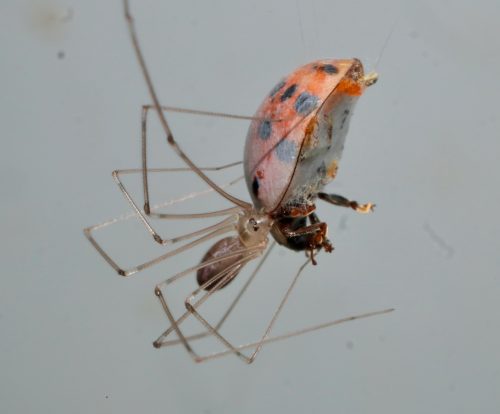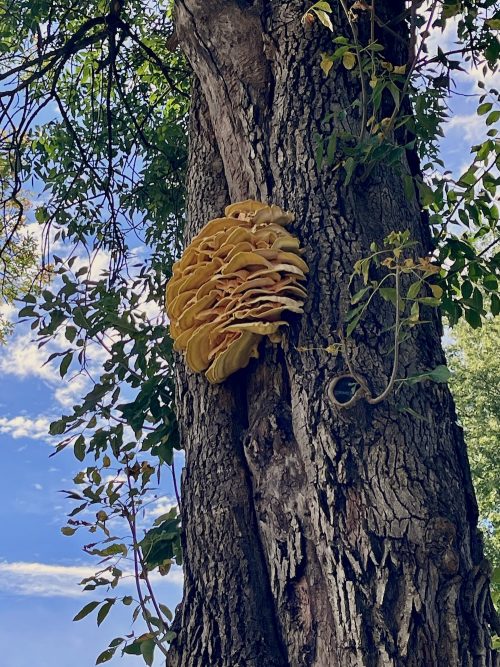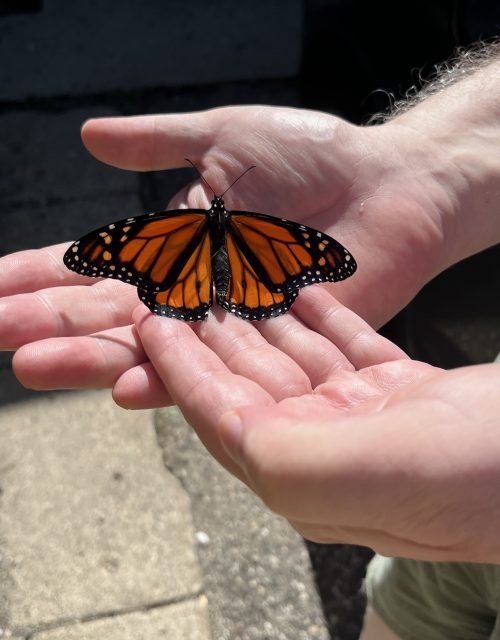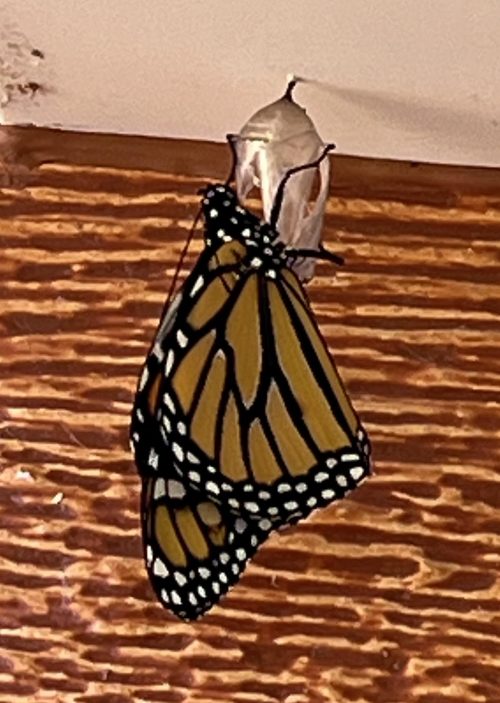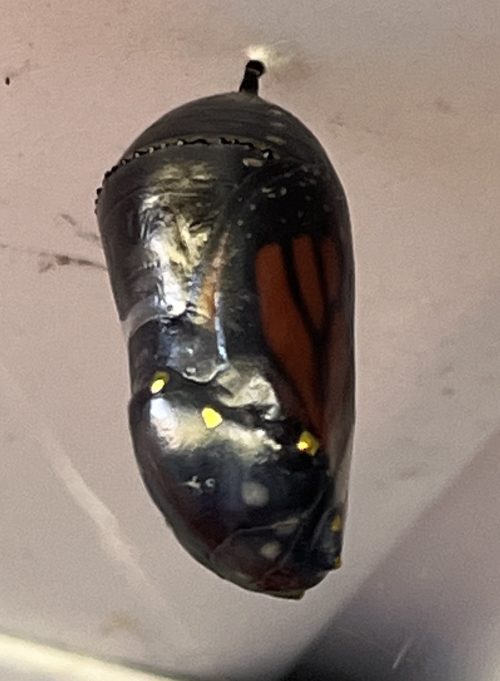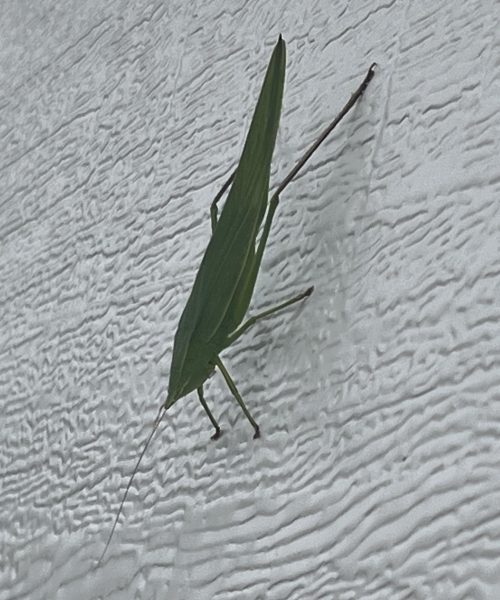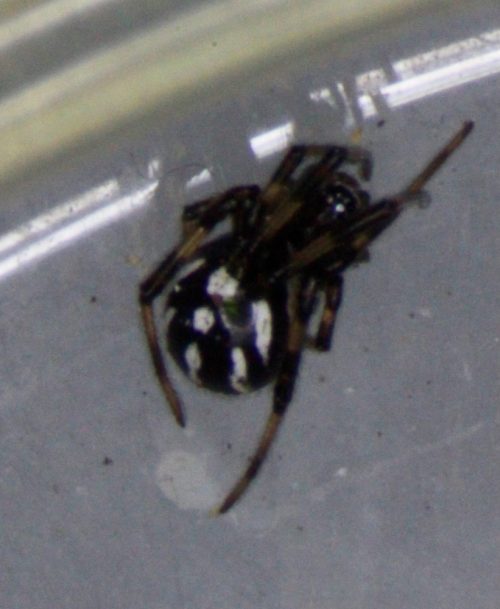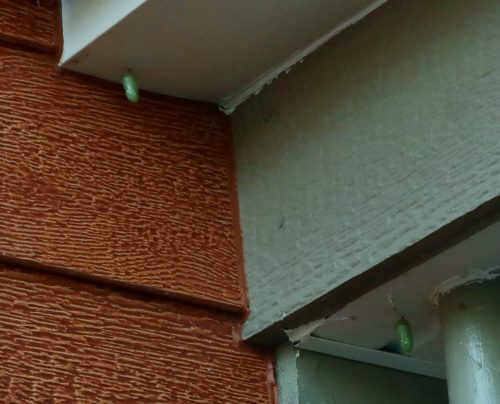We have a home Pholcus phalangioides living under our kitchen cupboard, who occasionally emerges when they’ve caught something in their cobweb. In this case, a ladybug, who has been trapped under there for the past day.
The spider is clearly fang deep in a gap under the beetle’s armor, but what adds a frisson of horror to the scene is that the beetle was still alive, it’s mouthparts and forelimbs slowly writhing as Mlle. Pholcus sups on her fluids.

